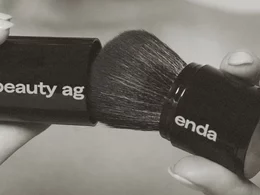
If you’re a pro in the pool, your swimming workouts consist of swimming laps up and down the lane a few times a week, and maybe even participating in Master Swim classes. This may translate to thinking that swimming in a triathlon is going to be easy. However, swimming in a lake or ocean, referred to as an open water swim, is a much different scenario than swimming in the pool at the gym or in your backyard.
For most people, open water swimming itself isn’t challenging, it’s the lack of experience and comfort in the open water that inhibits many novice open swimmers’ performance.
Common Fears of Open Water Swimming
- Not being able to see the bottom of the lake/pool
- Not having a lane line to rely on
- Having a tight wetsuit that may give the feeling of restricted breathing
- Not knowing what’s in the water (such as fish, sea grass, trash and algae)
- Not having a wall to turn around, or feeling as though it looks too far to swim
- During an event, feeling as though you might get “run over,” as there are a lot of people in the water
How to Get Comfortable in Open Water
The first rule of thumb is practice, practice, practice. The more you can practice in a nearby lake or even ocean, the more comfortable you’ll become with the surroundings and environment of an open water swim. However, don’t practice alone.
When you get into an open body of water start small. Wade into the water, bob up and down, let some water into your wetsuit, and put your head under. Then pick a number of strokes to do or a nearby landmark to swim to. Once there, stop, tread water, and then swim back. Turn and do the backstroke or sidestroke if you need to have your head and eyes out of the water in the beginning.
Practicing with groups of people is even better. However, there’s a good chance you will get an elbow, hand or foot slap at some point during an open water event. Be prepared, practice at the lake with a group, do some mock starts all together and swim to a nearby buoy or landmark at race pace. Don’t stop your momentum if you get nudged by someone’s foot or hand. Simply swim through it.
You may notice a difference in your pace and breathing in open water. Some swimmers are faster in open water while some are slower. This mainly depends on your experience, comfort level, and sighting ability. Search for local triathlon training and swim clubs that offer open water practice or hire a coach to help guide you in open water breathing and stroke techniques that are specific to lake or ocean, as there are some key differences in ocean swimming.
At the Village, we host a few open water swim practices and clinics at Bartlett Lake throughout the year. We have a talented group of swim and triathlon coaches ready to assist you so if you love to swim and are ready for a new challenge in the water, don’t hesitate to jump in!
At the Village we’re here to help you meet and exceed your fitness goals! Contact us today to ask about our membership options or to take a tour of one of our amazing facilities.










